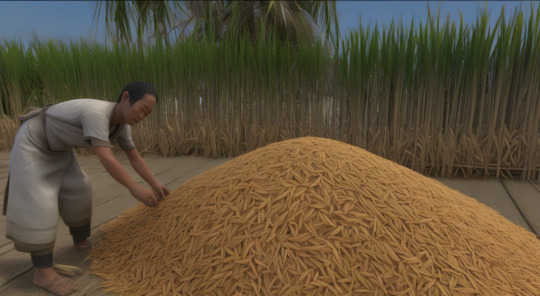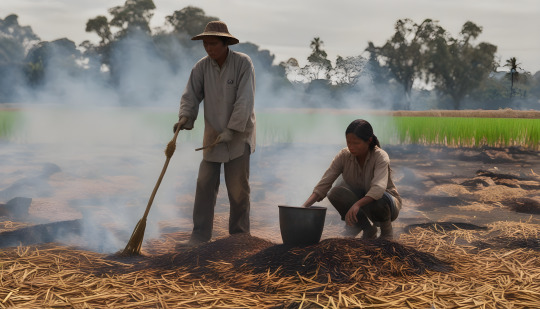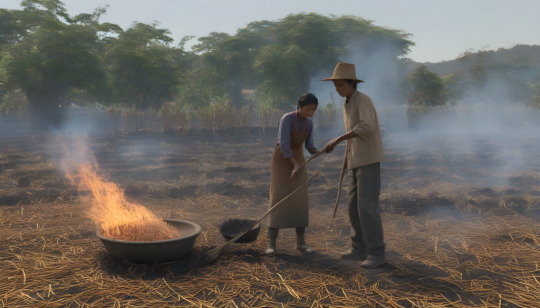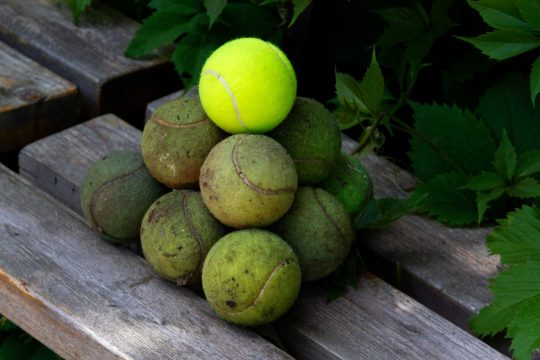#eco-friendlysolutions
Explore tagged Tumblr posts
Text
We invite you to participate in the International Plastics Exhibition
We are excited to announce our participation in the International Plastics Exhibition at Bhrikuti Mandap, Kathmandu, Nepal. R Mech Machines LLP specializes in cutting-edge machinery and technology for the plastic manufacturing sector. Our team will be on-site to demonstrate how our advanced systems can enhance your production processes, improve efficiency, and drive sustainability in your business. Explore our offerings, including Pet Bottle Scrap Plastic Washing and Recycling Plants, Municipal Solid Waste Segregation Management, HDPE Scrap Film Washing Plants, and HDPE PP Article Scrap Washing Plants. Exhibition Details: Event: International Plastics Exhibition Venue: Bhrikuti Mandap, Kathmandu, Nepal Stall No: 67 Dates: 28th to 30th November 2024 We are committed to delivering top-quality products adhering to global standards such as ASTM, ANSI, API, and DIN. To confirm your attendance or for further inquiries, reach out to us at [email protected], [email protected], or call 9327320386, 9913648567 Stay updated by visiting our website www.rmechmachines.com. Read the full article
#cutting-edgetechnology#Eco-FriendlySolutions#ExhibitioninKathmandu#GlobalStandards#HDPERecycling#InnovationinPlastics#InternationalPlasticsExhibition#JoinUsattheExpo#KathmanduExhibition#ManufacturingEfficiency#PETbottlerecycling#PlasticIndustry#PlasticIndustryLeaders#PlasticMachinery#PlasticManufacturing#plasticprocessing#plasticrecycling#PlasticWashingPlants#PlasticWasteManagement#PlasticsExhibition2024#PlasticsExhibitionNepal#PlasticsIndustryExperts#PlasticsSolutions#RmechMachines#RMechMachinesExhibit#RecyclingInnovation#recyclingtechnology#SustainabilityinPlastics#SustainableManufacturing#Wastemanagementsolutions
0 notes
Text
"Quick and Simple Preparation Guide: Carbonized Rice Husk"

👋Hey friends! Have you heard about carbonized rice husk and how useful it can be? If you want to make some yourself, it's actually pretty easy and straightforward. Here's a quick rundown of what you'll need and the basic steps:

We also have a detailed video on this same topic that you can explore for a more visual guide to the process. 👇 https://youtu.be/dTeg0niPGKc what carbonized rice husk is?Rice Husk is the outer cover of rice grains. Farmers remove it during processing. Normally it's just burned as waste. But researchers found we can turn it into something useful! By burning rice husk in a special way with minimal oxygen, it becomes "carbonized". However, on the other hand, this process causes certain parts to turn black and remain solid instead of burning. Carbonized rice husk, also called biochar, is good for soil. It helps the soil hold more water and nutrients. Plants grow stronger with carbonized rice husk in the dirt. Using Carbonized Rice Husk for Plants: It's easy for farmers to make. You just need a container to burn rice husk in slowly. Then the black chunks left over are carbonized rice husk. How can carbonized rice husk be beneficial for plants?Carbonized rice husk serves as an excellent growing medium due to its lightweight nature, high porosity, enhanced water retention, improved drainage, and sterile properties. It also provides a pH-neutral environment for plant growth and offers good aeration and resistance to decay. These properties make it an ideal choice for sustainable and organic gardening practices. What are the properties of carbonized rice husk that make it suitable for plants?The physical and chemical properties of carbonized rice husk, such as its lightweight nature, increased porosity, and ability to absorb foul odors, contribute to its effectiveness as a soil medium. Its resistance to decay and neutral pH further enhance its suitability for promoting healthy plant growth. Are organic fertilizers suitable for use with carbonized rice husk? Is Leaf Mold compost beneficial in conjunction with carbonized rice husk?Yes, leaf mold compost can be highly beneficial when used in conjunction with carbonized rice husk. The combination of leaf mold compost and carbonized rice husk offers a sustainable and nutrient-rich environment for plant growth. Leaf mold compost enriches the soil with organic matter, promoting the growth of beneficial microorganisms and enhancing soil fertility. what is the ratio of organic fertilizer we can add to carbonized rice husk?The ideal ratio will depend on factors like soil needs, crop demands, compost nutrient levels, and production goals. Start with lower ratios and monitor impacts. For example, with 4% carbonized rice husk, use 2-3% compost. With 10% carbonized rice husk, use 1-2% compost. Adjust as needed based on soil tests. In Quick and Simple Way we have presented a video on the same topic👇. https://youtu.be/b66cfx6Jlhw
Step-by-Step Quick and Simple Preparation Guide:
Acquiring the Rice Husk: Begin by sourcing high-quality rice husks from local rice mills or suppliers. Carbonization Process: In a controlled environment, partially burn the rice husks to achieve a carbonized state. We can do this using a special oven or a special machine called a pyrolysis unit. For Home Gardeners, you can make this yourself at home with Quick and Simple steps. Just watch the video by Clicking Here." Cooling and Storage: Once carbonized, allow the rice husk to cool before storing it in a dry and well-ventilated area. Benefits and Applications: The carbonized rice husk presents numerous benefits, including high porosity, water retention capacity, and resistance to microbial degradation. It can be utilized as a soil amendment, a component in potting mixes, or even as an eco-friendly alternative to traditional mulch. Using Carbonized Rice Husk as a Soil Medium: When used as a soil medium, carbonized rice husk enhances soil aeration, improves water retention, and provides a stable environment for microbial activity. Its balanced carbon-to-nitrogen ratio contributes to the overall health of the soil, making it an invaluable addition to gardening and agriculture practices. Preparing Carbonized Rice Husk for Planting : Before incorporating carbonized rice husk into the planting medium, it is essential to ensure proper preparation. Start by rinsing the material to remove any impurities or dust. Soaking it in water for a brief period can also soften it slightly, making it easier to handle during mixing and planting. Incorporating Carbonized Rice Husk into Planting Medium: For a well-balanced planting medium, mix carbonized rice husk with soil or compost in a 1:1 ratio. This blend provides optimal aeration, water retention, and nutrient availability. Thoroughly integrate the components for a homogeneous mixture. Choosing the Right Plants for Carbonized Rice Husk Medium: Carbonized rice husk can be beneficial for various types of plants, particularly those that prefer well-draining soil, such as succulents, cacti, and certain herbs. It is crucial to research the specific requirements of desired plants to ensure compatibility as a planting medium. Conclusion: Using half-burned rice husks in soil is great for helping plants grow and making gardens healthier. It's an eco-friendly way to improve the soil, keep water in, give plants good stuff to grow, stop weeds, and help good tiny bugs in the soil. If you try using burned rice husks in your gardening, you'll see a big difference in how well your plants grow, and it's better for the environment too!. Learn with Quick and Simple steps. Read the full article
#carbonizedricehusk#eco-friendlysolutions#gardening#GardeningTips#HouseplantCare#LeafyGreens#organicgardening#PlantGrowth#soilenhancement#soilnutrients#sustainableagriculture#sustainableecosystems#UrbanGardening
0 notes
Text
12 easy ways to become environmentally friendly

In today's world, it is important to take steps to protect the environment. Every small change can make a difference. Here are 12 easy ways to become environmentally friendly: - Reduce your plastic usage: Plastic is a major contributor to environmental pollution. You can start by carrying reusable bags, water bottles and coffee cups. - Save energy: Reduce your carbon footprint by turning off the lights, unplugging unused appliances and using energy-efficient light bulbs. - Use public transportation: Instead of using your personal vehicle, use public transportation whenever possible. Carpooling is also a great option. - Shop local: Shopping at local stores helps reduce the carbon footprint caused by shipping and transportation of goods. - Grow your own food: Start a small garden in your backyard or grow your own herbs in small pots. This reduces your reliance on packaged and shipped produce. - Recycle: Separate your recyclable materials from your trash and make sure to dispose of them correctly. - Use eco-friendly products: Look for products made from sustainable materials, such as bamboo or recycled plastic. - Reduce water usage: Fix any leaks and turn off the water when brushing your teeth. Also, take shorter showers. - Use natural cleaning products: Use natural cleaning products, such as vinegar and baking soda, instead of harsh chemicals. - Compost: Composting reduces the amount of waste in landfills and can also be used as a natural fertilizer for your garden. - Buy secondhand: Secondhand items are often in good condition and can be repurposed, reducing the need for new products. - Educate others: Share your knowledge about the environment with others and encourage them to make changes in their daily lives. Becoming environmentally friendly is not difficult. Simple changes in our daily lives can have a huge impact on the environment. So, let's take the first step towards a cleaner and greener world. Read the full article
#consciousconsumption#earth-friendly#eco-conscious#Eco-friendly#eco-friendlylifestyle#eco-friendlyproducts#Eco-friendlysolutions#eco-tips#energyconservation#environmentalpractices#environmentalresponsibility#environmentallyconscious#gogreen#greenchoices#greenhabits#greenliving#reducecarbonfootprint#sustainability#sustainablehabits#Sustainableliving#zerowaste
1 note
·
View note
Text
Carbonized Rice Husk: Rocket Your Plant Growth

👋There, plant lovers! Have you heard about using Carbonized Rice Husk to supercharge your garden? It's a natural way to help your plants grow better and stronger. We're talking about Carbonized Rice Husk! This amazing stuff can make a real difference in how your plants thrive. Let's dive into the world of Carbonized Rice Husk and see how it can be a game-changer for your gardening journey.

Carbonized Rice Husk Enhancing Soil Structure and Aeration:
When we talk about making soil better for plants, we sometimes use big words like "enhancing soil structure and aeration". But what does that really mean? Well, it's all about making the soil fluffier and allowing air and water to move through it. So, let's picture this: imagine you're making a cozy bed for your plants. You want to make sure it's not too packed together, right? Because just like people, plants need room to breathe! When the soil is fluffy, and not too compact, it's easier for the roots to stretch out and find water, air, and all the good stuff they need to grow big and strong. Now, let's talk about why carbonized rice husk is like a superhero for soil. It's like a magic ingredient that can make the soil super cozy for plants. When we mix it into the soil, it creates little pockets of space, kind of like fluffy clouds in the sky. These pockets let the air and water move around, making the soil just right for plants to grow happily. So, when we say "enhancing soil structure and aeration," we're really talking about making the soil feel nice and airy for our plant friends. Carbonized rice husk is like giving them the comfiest bed ever, and when plants are comfy, they can grow like little rockets shooting up into the sky! Remember, happy soil means happy plants, and with carbonized rice husk, we can turn our gardens into the best place for our plants to thrive and grow beautifully. https://youtu.be/dTeg0niPGKc By Watching This Video, You can Understand Better 👉
The Benefits of Carbonized Rice Husk as a Soil Medium
In your gardening journey, have you ever considered using half-burned rice husks to nourish your plants? A humble byproduct of rice production, carbonized rice husk is a wonder material for gardening. It's like a superhero for your soil, offering a multitude of benefits to your beloved plants and the environment. First off, using burned rice husks in your soil is like giving your plants a booster shot. It helps the soil hold onto water better, ensuring your plants stay hydrated even in hot weather. The husks also work like a shield, keeping pesky weeds at bay, so your plants can thrive without competition. Plus, they slowly release nutrients into the soil, acting as a natural fertilizer over time. But that's not all – burned rice husks support a bustling community of tiny helpers in the soil. These little friends, like earthworms and beneficial microorganisms, work tirelessly to keep your soil healthy and your plants happy. Not only is carbonized rice husk great for your plants, but it's also a win for the environment. By using a natural byproduct that would have otherwise gone to waste, you're opting for a sustainable and eco-friendly gardening solution. It's a small change that can make a big difference for your garden and the planet. Carbonized Rice Husk Improving Water Retention and Drainage: When you use half-burned rice husks in your garden, it's like a super drink for your plants! The husks soak up water like a sponge and hold onto it, so your plants won't get thirsty as quickly. Plus, they help drain extra water away, so your plants' roots don't get too soggy. It's like giving your plants the perfect balance of water – not too much, not too little. And that's the secret to having super happy and healthy plants in your garden! When you use burned rice husks in your garden, it's like a super drink for your plants! The husks soak up water like a sponge and hold onto it, so your plants won't get thirsty as quickly. Plus, they help drain extra water away, so your plants' roots don't get too soggy. It's like giving your plants the perfect balance of water – not too much, not too little. And that's the secret to having super happy and healthy plants in your garden! Nutrient Enrichment and Slow Release: When you use half-burned rice husks in your garden, it's like giving your plants a healthy meal. The burned rice husks enrich the soil with all the good stuff that plants need to grow strong and happy. They also don't release all the nutrients at once, so your plants get a slow and steady supply of food, just like eating healthy snacks throughout the day. This helps plants grow steadily and stay healthy for a long time, making your garden a green and vibrant paradise. The types of Nutrients that can be Enriched in half-burned rice husk: Carbon: Half-burned rice husk contains a significant amount of carbon, which can contribute to enhancing soil structure and promoting the growth of beneficial microorganisms. Potassium: Partially combusted rice husks may retain useful levels of potassium, which is an essential nutrient for plant growth and overall health. Silica: Half-burned rice husk can retain silica, which is beneficial for plant strength and resilience against environmental stresses. Other trace elements: Depending on the extent of burning, various trace elements and micronutrients can potentially be enriched in half-burned rice husk, contributing to plant nutrition and growth. Suppressing Weeds and Preventing Erosion: When you use burned rice husks in your garden, it helps stop weeds from growing and keeps the soil from washing away when it rains a lot. This means less work for you pulling weeds and healthier soil for your plants. The burned rice husks form a protective layer on the soil, so even if it rains hard, the soil stays in place and your plants stay happy. Plus, it's all-natural and good for the environment, so you can feel good about using it in your garden. Promoting Beneficial Soil Microorganisms: - Encourage good bugs in the soil - These bugs help plants get necessary nutrients - They also fight off harmful microorganisms - Healthy soil bugs boost plant growth and overall soil health - Using carbonized rice husk nurtures a thriving environment for these beneficial soil organisms, leading to improved plant growth and sustainable gardening practices
Step-by-Step Preparation Guide:
Conclusion: Using half-burned rice husks in the soil is great for helping plants grow and making gardens healthier. It's an eco-friendly way to improve the soil, keep water in, give plants good stuff to grow, stop weeds, and help good tiny bugs in the soil. If you try using burned rice husks in your gardening, you'll see a big difference in how well your plants grow, and it's better for the environment too! Read the full article
#carbonizedricehusk#eco-friendlysolutions#gardening#GardeningTips#HouseplantCare#LeafyGreens#organicgardening#PlantGrowth#soilenhancement#soilnutrients#sustainableagriculture#sustainableecosystems#UrbanGardening
0 notes
Text
Smart everyday uses for old tennis balls

If you have a few old tennis balls lying around, don't throw them out just yet. These versatile and bouncy balls have several smart uses beyond their intended purpose on the court. From cleaning to organization and even pet care, here are some smart ways to repurpose old tennis balls. Furniture Protectors: If you have hardwood or tile floors, placing old tennis balls on the legs of your furniture can prevent scratches and scuff marks. Simply cut a small slit in the ball and slide it onto the leg of your chair or table. DIY Massager: Tennis balls can be used as a DIY massage tool to work out muscle knots and sore spots. Roll the ball along your back, neck, and legs for a relaxing and therapeutic massage. Car Wash Tool: Tennis balls can make for an effective car wash tool. Place a few balls into a bucket of water and use them to scrub away dirt and grime from your car's exterior. Pet Toys: Tennis balls are a classic pet toy for a reason - dogs love them! But rather than buying new ones, you can repurpose old tennis balls for your furry friend. Cut a small slit in the ball and stuff it with treats or your pet's favorite toy for a fun and interactive toy.

Doorstop: An old tennis ball can make for an effective and stylish doorstop. Simply cut a slit in the ball and place it over the edge of your door to prevent it from closing. Dryer Balls: Adding tennis balls to your dryer can help soften and fluff up your clothes while also reducing drying time. Simply throw a few balls into the dryer with your laundry and let them work their magic. Jar Opener: Tennis balls can be used as a makeshift jar opener. Simply cut a small slit in the ball and use it to grip and twist off stubborn jar lids. Cleaning Tool: Tennis balls can be used as a handy cleaning tool. Cut a small slit in the ball and use it to clean hard-to-reach spots like corners, baseboards, and light fixtures. Old tennis balls have plenty of smart uses beyond their original purpose. From furniture protectors to DIY massagers, car wash tools, and pet toys, these versatile balls can be repurposed in countless ways. So before you toss out those old tennis balls, consider giving them a new life with one of these clever uses. Read the full article
#Cleaningtricks#Creativeuses#DIYtools#Eco-friendlysolutions#Householdhacks#Organizationtips#Petcare#Repurposingtennisballs#Sustainableliving#Upcyclingideas
0 notes